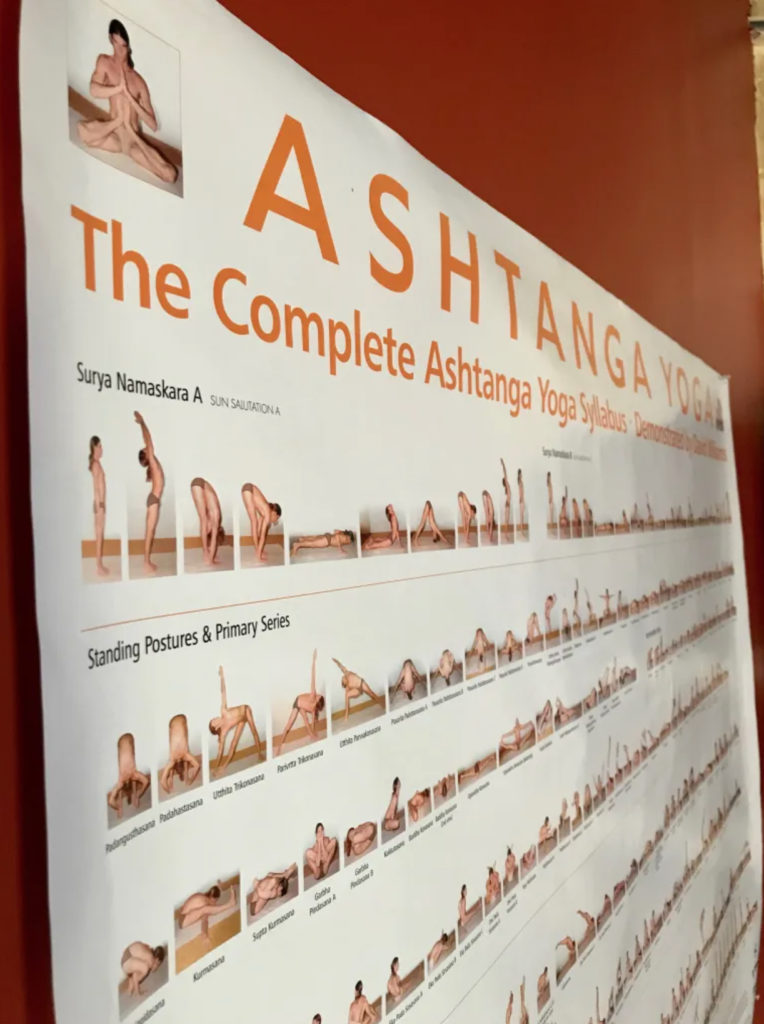 Are you curious about Astanga classes but nervous just to jump in and give it a try? We’ve got pro tips & helpful hints that may make it a little less intimidating class to try out!
Are you curious about Astanga classes but nervous just to jump in and give it a try? We’ve got pro tips & helpful hints that may make it a little less intimidating class to try out!
First, we recommend Astanga for experienced students. While there are modifications offered for poses, just like a regular O2-style class, the pace of Astanga is a little quicker because there’s a lot to get to! In Primary Series, students who are Intermediate-level and beyond will recognize many of the postures, but it’s helpful to have a couple of O2 Power classes under your belt, since they, like Astanga, are ninety-minute practices.
When you take your first-ever Astanga class, let the teacher know you’re new to the style so he or she can give you their personal pro-tips and help keep an eye out for you during practice.
All of our Astanga classes are lead — we do not offer Mysore-style classes.
PROPS: For first timers, we’d recommend grabbing two blocks and a strap. Set up one block at the back edge of your mat and leave your other props up at the top of the mat.
THERE WILL BE CHANTING: Astanga classes start with a chant in Sanskrit that begins and ends with an om. It is optional to participate in the chant which is essentially thanking the lineage of teachers who created the Astanga system.
OPENING POSTURES: After the chant is completed, practice begins. The warm up phase of Astanga starts out with five Sun A’s and five Sun B’s followed by a series of standing postures which proceed in a pattern of right side/left side and/or a short series of postures strung together. For students new to practice, we usually recommend that you set up somewhere in the middle or to the far left since in this section you will open your stance out to the face the right side and there’s a bit of turning around/quick changes between postures, so avoiding being on the right side of things will ideally give you a view of students more familiar with the sequence.
PRIMARY SERIES POSTURES: The first posture in Primary Series is Dandasana (staff pose). Starting here, all remaining postures will continue the pattern of right side/left side, but with the option to add a vinyasa (from seated) between every pose. For students who are new to the series, we like to make sure you know that you can always skip vinyasas when you need a break. Ideally, skipping the vinyasas between the right side/left side of one pose and trying to do the vinyasas in between poses is best.
The Primary Series postures are a series of seated forward folds, a set of five navasanas (boat pose) followed by what we sometimes lovingly call the “rolly-poly” section of practice, concluding with bridge pose.
CLOSING POSTURES: The closing sequence is a series of backbends (Wheel Pose with an option for standing up & dropping back), a full shoulder stand sequence counterposed with fish pose, an inversion (headstand), and a series of lotus-based postures.
Each section consists of an even third of the practice (30 minutes each = 90 minute practice).
SECOND SERIES: Second Series classes have the same opening and closing postures as Primary Series. The Second Series postures themselves are more advanced than the Primary Series poses, but you will notice how they build off that sequence. There are more poses focused on spinal extension, arm balancing, and foot-behind-the-head-level flexibility (what’s more fun than one foot behind the head, you ask? TWO feet behind the head!). In general, there’s more chaos in the Second Series postures that have students doing partner work and moving around the room a bit and even coming into postures from standing — not to mention seven headstands. You can always opt out of the partner work and there will be modifications for much of the madness, but it’s good to come into Second Series with a sense of humor and a sense of adventure….and it’s also good to keep in mind that this is our most advanced class offering. Desk staff and Astanga teachers will likely give you a verbal reminder about the complexity of Second Series before embarking for the first time on this wild journey. We simply want to make sure you know what you’re getting yourself into here, wink wink. It’s fun, though, really! Give it the ol’ college try once you get pretty comfortable with Primary Series and/or O2 Power classes.
ONE FINAL PRO TIP: We have a lot of students who have a very regular Astanga practice, so don’t worry if you see others in class moving “effortlessly” from one pose to the next. Let those people stand as examples for how the poses look (likely in various stages of modification) — use them as a resource! Feel free to ask lots of questions before or after class. Since Astanga classes are the same poses in the same order every time, it won’t take you long to feel familiar with how the sequence works.
Any additional questions? Feel free to ask any of our teachers the next time you come for class or email us: info@o2yoga.com.